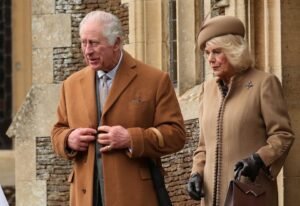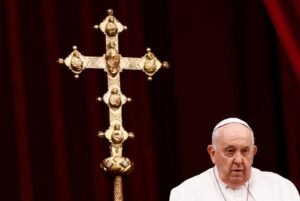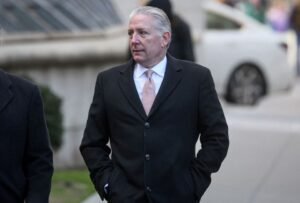In July, NATO leaders will adopt thousands of pages of secret military plans that would reveal for the first time since the Cold War how the alliance would respond to a Russian attack.
For decades, NATO has fought smaller wars in Afghanistan and Iraq and believed post-Soviet Russia no longer posed an existential threat. The action marks a major turnaround.
However, with Europe’s worst war since 1945 raging just beyond its borders in Ukraine, the alliance is warning that it must have all planning before a battle with a major enemy like Moscow.
“The fundamental difference between crisis management and collective defence is this: It is not we but our adversary who determines the timeline,” said Admiral Rob Bauer, one of NATO’s top military officers. “We must anticipate conflict at any time.”
NATO’s regional plans will help states improve their armies and logistics.
“Allies will know exactly what forces and capabilities are needed, including where, what and how to deploy,” said NATO commander Jens Stoltenberg concerning the highly classified documents that would, like the Cold War, allocate soldiers to defend specified regions.
This formalizes a process started by Russia’s 2014 annexation of Crimea, which prompted Western allies to send combat troops to the east for the first time, with Britain, Canada, and Germany leading in one of the Baltic states.
NATO has moved 1,000 km (600 miles) to the east and increased from a dozen to 31 members since 1990, but certain key elements have altered.
Last month’s accession of Finland quadrupled NATO’s boundary with Russia to 2,500 km, making deployments more flexible than when Germany was the major battle zone.
Ian Hope, NATO’s Supreme Headquarters Allied Powers Europe (SHAPE) historian, said the alliance no longer plans a large-scale nuclear war against Moscow and its allies, most of whom are NATO members.
“We don’t envision the type of war that the Cold War was, where allied forces… would be hit simultaneous with large-scale Warsaw Pact attacks,” he said, citing localized confrontations that demanded swift force deployments.
Internet, drones, hypersonic weaponry, and rapid information flow pose new concerns.
“The battlefield transparency discussion is good. “With all the satellites and intel, we’re able to see a maturing crisis,” said Lieutenant General Hubert Cottereau, SHAPE’s Vice Chief of Staff. “Ukraine had all the indicators.”
Unlike the Baltic states, NATO does not perceive a need to increase troop levels in the east because of this transparency.
“More troops on the border is like having a hammer. “You want to find a nail,” Cottereau advised. “If the Russians are massing troops on the border, that will make us nervous; if we are, that will make them nervous.”
To greatly enhance readiness will be difficult. In 2022, NATO raised its alert level to 300,000 from 40,000.
The alliance’s inability to meet Ukraine’s requests has highlighted its inability to produce enough weapons and ammunition. NATO must quickly update the long-neglected logistics needed to deploy troops by rail or road.
In Vilnius, Stoltenberg will urge leaders to enhance the alliance’s military budget target to fund regional ambitions.
NATO officials said it would take years to implement the preparations, but they could fight immediately.
We’ll fight tonight. You’re never prepared. Cottereau said never. “We must fight tonight if necessary with what we have.”
















































Comment Template